‘Alien-like’ parasitic wasp that sucks blood from its host before eating it from the inside out is discovered in the Amazon
>
An ‘alien-like’ parasitic wasp has been discovered in the Amazon, sucking blood from its host before eating it from the inside out.
Scientists at Utah State University identified the new genus while surveying the Allpahuayo-Mishana National Reserve in Peru.
The team collected an adult female with a giant almond-shaped head and a tube-like organ, which she uses to lay eggs in victims, including caterpillars, beetles and spiders.
Name of the new parasitic wasp Capitojoba amazonica, It combines a reference to its large, alien-like head, “Capito”, with a similar wasp genus name, “Juba”.
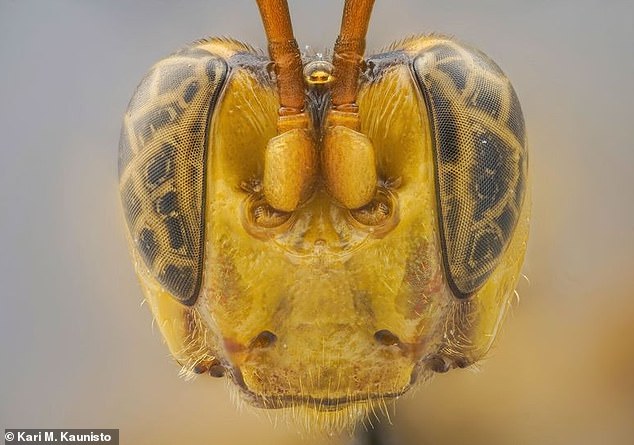
The newly discovered bright yellow wasp, Capitojoba amazonica (above), is not just an alien because of its large almond-shaped head. The creature lays its eggs inside its victims, turning the prey into incubators, similar to the terrifying “xenomorph” in Ridley Scott’s 1979 horror classic. alien
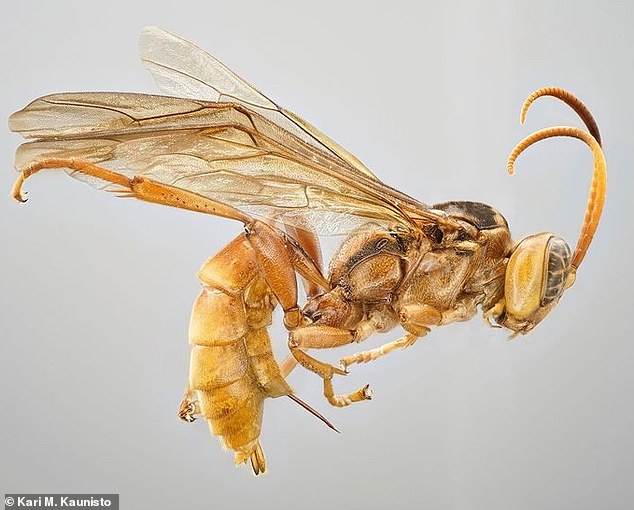
Once they hatch, the larvae of this newly discovered parasitic wasp feed on the insides of their mother’s vampire-like insect prey. The tiny wasp begins by sucking its host’s blood-like “hemolymph” fluid before feeding on the creature from the inside out.
According to the lead author of the new study, this predatory wasp, biologist Brandon Claridge, is known as a “solitary endoparasite”: a parasite that lays a single egg inside its host, then kills that host when it matures.
While the wasp has proven to have a diverse appetite for victims, including caterpillars, beetles and spiders, the mother… C. amazonica You won’t lay just one egg in any old insect.
“Once the host is located and fixed, the female will frantically strike it with her antennae,” Claridge, a doctoral candidate at Utah State University, told Live Science via email.
“If acceptable, the female will deposit a single egg inside the host by puncturing it with an ovipositor (a tube-like organ for laying eggs).”
But sometimes, mom C. amazonica Wasps will enjoy some vampire activities of their own.
“Females will even stab the host with their oviposition device,” Claridge said. Live sciences“It feeds without laying an egg because it helps it acquire the nutrients necessary for egg maturation.”
Claridge is working with a team of researchers and entomologists from the University of Turku in Finland, who have been cataloging new species in Peru’s Alpahoyao-Michana National Park since the 1990s.
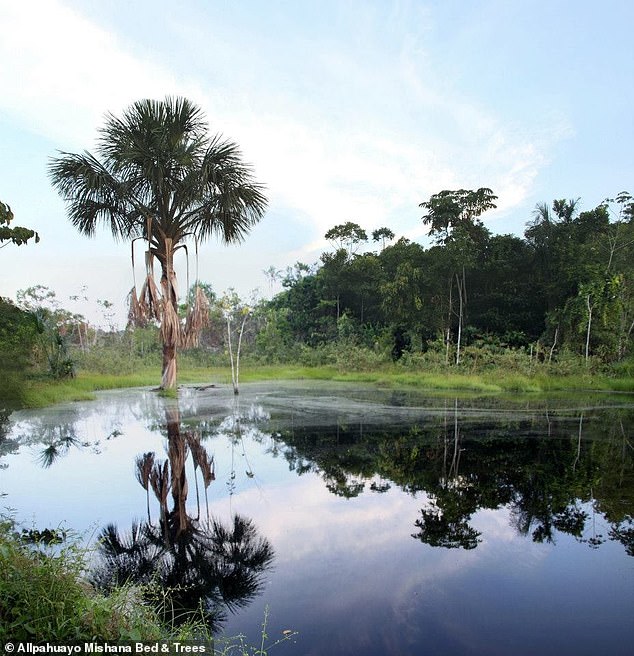
Finnish researchers have aided conservation efforts in the Allpahuayo-Mishana Reserve in Peru since the 1990s. The researchers said the region’s complex geological history led to the development of several different types of rainforest ecosystems in the Allpahuayo-Mishana.
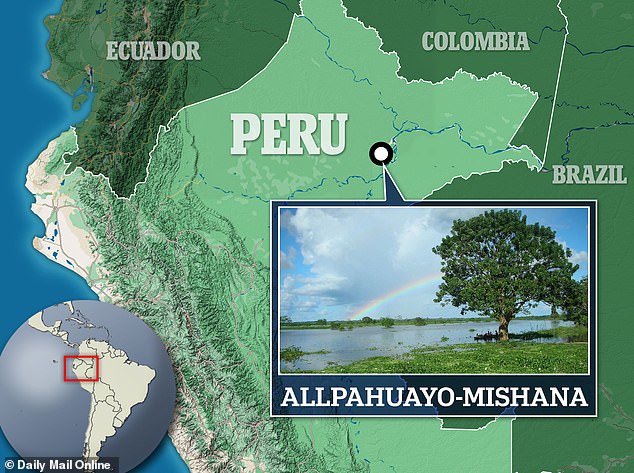
Scientists used large tent-like devices, called traps, to collect samples of the unique wealth of insects that inhabit Alpahoyao-Michana, which is home to several different types of rainforests – some seasonally flooded and some built on white sand.
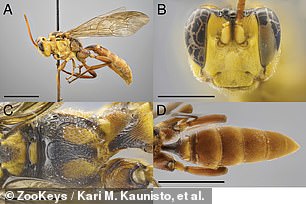
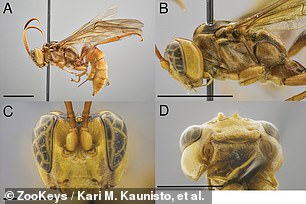
The characteristic specimen or ‘holotype’ of the male version of the new wasp, C. amazonica, (left) with its less developed antennae and more images of the female ‘holotype’ (right)
The researchers used large tent-like devices, called malaise traps, to collect samples of the unique wealth of insects that inhabit Allpahuyao-Mishana, which is home to multiple different types of rainforest, some seasonally flooded and others built on white sand.
“The biodiversity of many organisms is the highest on the entire planet in Allpahuayo-Mishana,” says study co-author Ilari Sääksjärvi, professor of biodiversity research at the University of Turku.
“Allpahuayo-Mishana is part of the Amazon region that has an unprecedented abundance of species, due to the complex geological history of the region,” Saxjarvi said in a statement from the university.
‘“Unfortunately, the area is currently changing rapidly due to human activities,” he added.
The Alpahoyao-Michana region of Peru first interested scientists in the late 1980s – when an American botanist named Alwyn Gentry discovered a small patch of rainforest that had the largest number of different tree species ever growing in one place.
“The nobles wanted to discover how many tree species could grow in 2.5 acres (one hectare) of Amazon rainforest,” Saxjarvi said.
“In his study, he discovered nearly 300 tree species in that 2.5-acre research patch.”
“We have been studying insect biodiversity in the same research areas since 1998, and have reported some of the largest numbers of insect species in the world from this region,” he noted.
The Biodiversity Unit of the University of Turku said they were committed to investigating, in their words, “how the impact of human activities, such as climate change, is changing the landscape of rainforests.”
The researchers noted that this parasitic killer wasp was just one of 109 new species the team discovered through malaise traps in this national reserve.
“We have discovered many species unknown to science, which we will describe in the future,” Claridge said in a statement.
“The current study begins this research.”
(Tags for translation)dailymail
